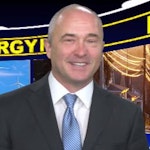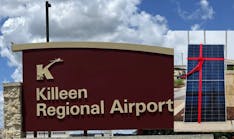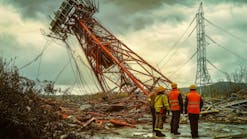It doesn’t take a whole lot of artificial intelligence to understand the energy industry has a reality check on data centers ahead.
Numerous industry forecasts predict—warn, might be a better term—that data center capacity and energy demand could more than triple by the end of the decade. A new report by on-site power technology firm Bloom Energy estimates that the load from data center customers could reach 80 GW by 2030.
This could be a big opportunity for several players on the energy transition front, from distributed energy resources to small nuclear startups to microgrid developers—but it is a massive and complex problem, too, according to the Bloom Energy report citing sources such as McKinsey and Reuters. Bloom’s research team talked to a variety of data center industry insiders.
“In hearing from these leaders, we were surprised by the pace of change and the growing expectation that onsite power generation will play a greater role in powering data center projects,” the Bloom Energy report reads. “Leaders expect approximately 30% of all data center sites to use some onsite power by 2030, 2.3 times more than just seven months prior. We find that new data center announcements corroborate this expectation.”
Some 13% of current data centers utilize some form of on-site power, according to the report. What will drive the upward trend in on-site power will be a scaling up of data center energy load not envisioned by electric utility planners only five years ago.
Tech giants such as Meta, Oracle, Amazon Web Services, Google and Microsoft certainly have sustainability in mind for the types of energy they want powering their data centers and AI training models. At the same time, on-site power must deliver on several other criteria such as time to power, cost, load flexibility and power density, the Bloom Energy report reads.
The hyperscale data center industry is already known for using on-site power generation—from both natural gas and diesel gen-sets—as backup power. In the future, the specter of potential utility-scale resource inadequacy could compel companies to consider and/or sign contracts for gas turbines, natural gas and potentially hydrogen fuel cells and, finally, small modular nuclear reactors.
None of the latter are operational or even built yet, but SMRs could offer the promise of baseload and carbon-free power. Many of the biggest data companies such as Google, Amazon Web Services and Microsoft are contracting with nuclear generation firms now with the idea of small nuclear power by the mid-2030s.
“Data center leaders are showing growing optimism about emerging technologies such as geothermal power, small modular reactors and gas generation with carbon capture and sequestration (CCS),” reads the Bloom Energy study. “We are seeing these technologies appear in long-term roadmaps as companies work toward sustainability commitments.
Operational U.S. data center capacity is currently estimated at around 25 GW. Some 20 GW of new projects have already been announced, but industry researchers forecast another 35 GW likely will be announced within the next few years.
Electric utility reports back up the pace of this growth. In one of its quarterly earnings calls last year, Midwest utility holding company AEP reported some 15 GW of data center load commitment within its service territory alone.
Bloom Energy manufactures solid oxide fuel cells (SOFC) for customers in the utility, commercial and industrial sectors. Among its recently announced contracts is an order from AEP this year for 100 MW in SOFCs this year, with the potential for up to 1 GW in fuel cells to meet future data center energy demand.






